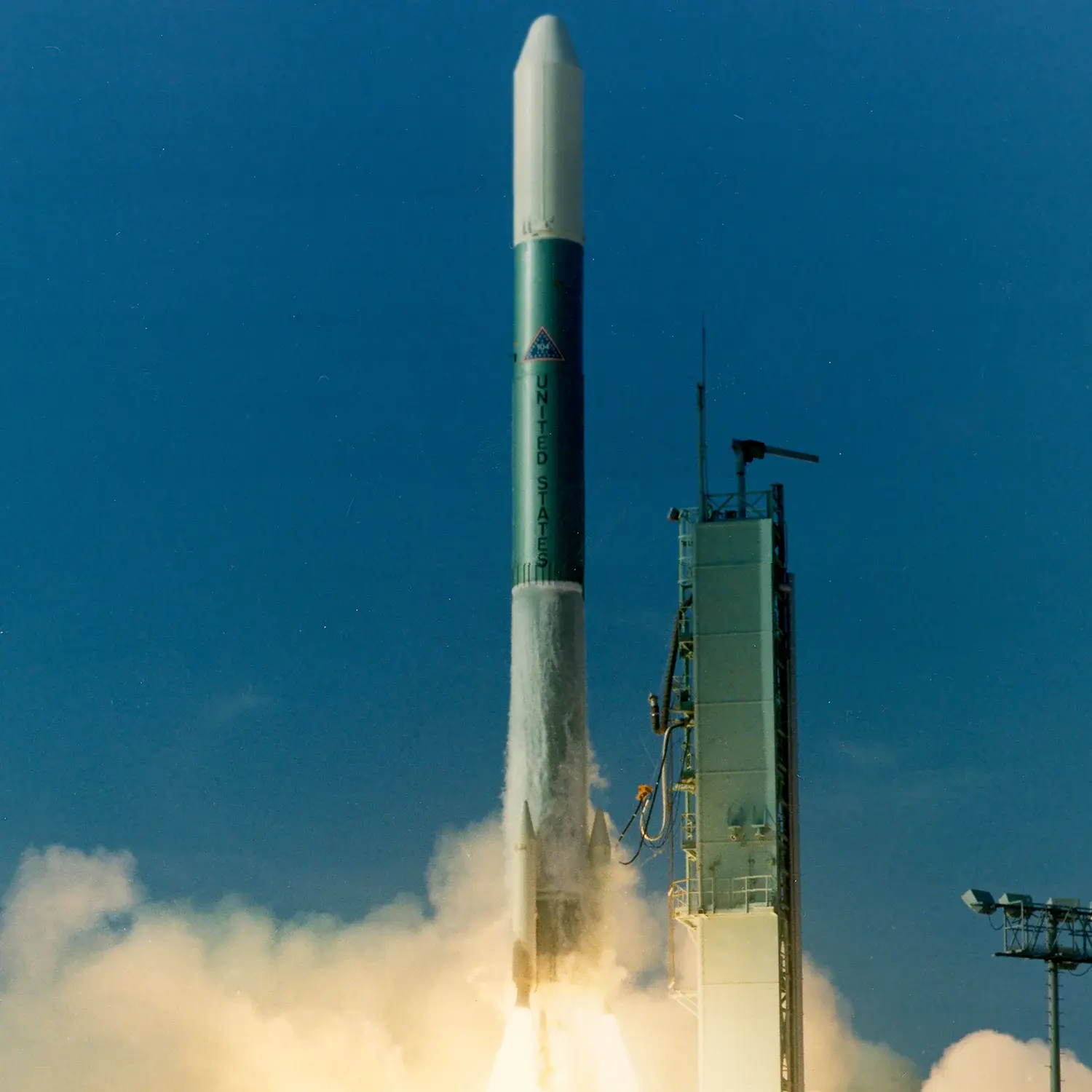Explorer 64 (SME) & UoSAT-1
Launch Success
Liftoff Time (GMT)
11:27:00
Tuesday October 6, 1981
Watch Replay
24/7 Coverage
Mission Details
Explorer 64 (SME)
The Solar Mesosphere Explorer (SME) mission objective was primarily to investigate the processes that create and destroy ozone in the Earth's mesosphere and upper stratosphere. Some specific goals were to: determine the nature and magnitude of changes in mesospheric ozone densities resulting from changes in the solar ultraviolet flux; determine the interrelationship between solar flux, ozone, and the temperature of the upper stratosphere and mesosphere; determine the interrelationship between ozone and water vapor; and determine the interrelationship between nitrogen dioxide and ozone. All instruments on-board the SME were turned off in December 1988 because of energy considerations.
Sun-Synchronous Orbit
1 Payload
145 kilograms
UoSAT-1 (Oscar-9)
UoSAT-1 was a British amateur radio satellite which orbited Earth and was built at the University of Surrey. It exceeded its anticipated two-year orbital lifespan by six years, having received signals on 13 October 1989, before re-entering the atmosphere.
Sun-Synchronous Orbit
1 Payload
54 kilograms
Rocket

Launch Site
Stats
Delta 2000 Series
44th
Mission
1st
Mission of 1981
1981
102nd
Orbital launch attempt
